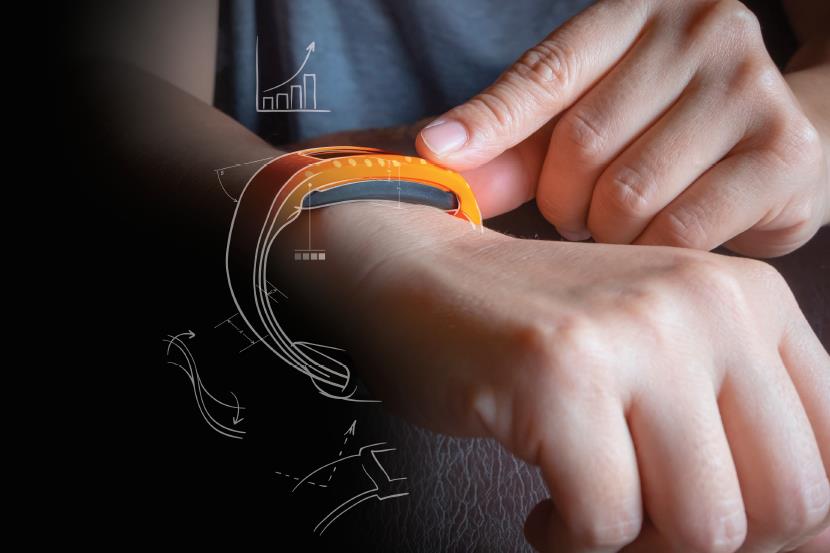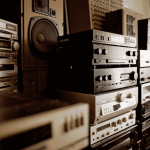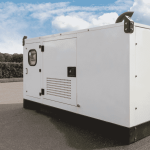The FTC recently extended the deadline for changing to the Lighting Facts packaging label to January 1, 2012. The label is supposed to make it easier for consumers to understand the energy costs of similar bulbs, but our investigation finds the new labels more notable for what they don’t tell us.
To understand the implications of the FTC lighting label change-over is to understand why it really doesn’t do anything more than give the appearance of propriety. The affixation of a government-approved label is enough to give most people a sense of security when buying a product, but when there is no requirement for testing to verify the information on the label, the values could simply be inflated, invented, and unverified numbers. The FTC label requires several disclosures including an estimated usage cost, the number of lumens, and the ambient quality of the light.
Watts, Lumens & Lux
These terms are often used interchangeably to describe light bulb output but doing so is a misnomer, as each one is a distinct measurement of completely different elements involved in lighting.
· A watt is an electrical unit that measures the amount of electrical power used by a device.
· A lumen is a measurement of the amount of light given off by a light source (measured in candela).
· Lux is the saturation of light in a given area, the amount of lumens per square meter.
Who Tests Product Claims?
Because the government doesn’t require any specific testing to be done on the FTC lighting facts label information, the products can claim anything they want. Without independent verification, the labels are not trustworthy. So whom do we trust to do this testing for us? The lighting industry itself, the government’s Energy Star program, or someone else?
The Energy Star program still uses the DOE standards and will not certify any bulb that hasn’t passed thorough testing, or at least that’s the theory. So, how reliable is the Energy Star rating system? The program allows manufacturers to test their own products and only selectively spot-checks the test results they submit. A report released by the EPA Office of the Inspector General about the Energy Star program stated, “Deficiencies included the lack of a quality review of the data collected; reliance on estimates, forecasting, and unverified third party reporting; and the potential inclusion of exported items.” If that isn’t enough to shake your confidence in the Energy Star program, then maybe you should also know that the Government Accountability Office released the following information on the Energy Star program. According to Popular Mechanics, they “had accepted 15 out of 20 bogus products submitted for approval. The Energy Star program had also qualified four businesses as Energy Star partners, failing to catch the fact that information on the companies, products and staff were all fictitious.”
It seems that there is no accountability in the industry, no oversight in the government program, and no third viable option. This leaves the consumer woefully uninformed and relegated to doing in home testing in real world situations.
Information Included with Lighting Labels
The DOE and FTC have different labels for lighting. DOE labels are found on all commercially available lighting while the new FTC lighting facts label will only be required on medium sized screw-in bulbs (which are the standard table lamp size bulbs). Here’s what you will find on each label.
DOE: Light Output in Lumens, Watts, Efficiency, Model number, Type, Brand, Color Rendering Index, Correlated Color Temperature, and IESNA LM-79-2008.

· FTC: Brightness, Energy Cost, Life Expectancy, Light Appearance, Wattage, Mercury Content


What do these labels actually contain? What does the jargon mean?
· Light Output in Lumens/Brightness: This is a measure of the total light output of a bulb measured in lumens. On the DOE label, this is the number reported on the LM-79 report. On a FTC label, it is the number the manufacturer claims the bulb emits.
· Watts/Wattage: This is the total energy used by the bulb. On the DOE report it is calculated at 120 Volts, on the FTC there is no disclosure of the voltage.
· Energy Cost/Efficiency: This is an estimated cost based on the wattage and lumens and the cost of electricity. This is calculated on a yearly basis using a fictitious (estimated) cost per watt
· Light Appearance/Correlated Color Index: This is a measure of how the light looks to a person. “Cool” colors have higher Kelvin temperatures (3600–5500 K) while “Warm” colors have lower color temperatures (2700–3500 K). The Color Rendering Index measures how the light affects the color of objects around it.
· IESNA LM-79-2008: Illuminating Engineering Society of North America Submit LM-79 Test Report from a NVLAP (National Voluntary Laboratory Accreditation Program) accredited or CALiPER (Commercially Available LED Product Evaluation and Reporting) approved Test Laboratory.
The DOE requires independent testing to verify the information that is presented on their labels, but the FTC label does not specifically require test procedures to verify the stated performance or lifetime claims. The new law means that the FTC label is the only one required and will supersede the DOE label.
This means the quality-tested information of the DOE label will no longer be available at the point of sale. Consumers will be forced to make decisions on lighting based on unverified claims provided by the manufacturers. The government has actually made it easier for competing companies to misrepresent the quality of their products.
CFLs and LEDs in the Home
So where do various bulbs land when thrown into real world competition? Unfortunately, there are no studies available on Compact Fluorescent Lighting (CFL) or Light Emitting Diodes (LED) bulbs that allow for duplication of their procedures. These studies often corroborate the claims made by the manufacturer (and since the funding sources are often obscured, the study cannot be trusted). Because the life of CFL bulbs is stated to be well over five to ten years, an in-home test might not seem applicable. With LEDs, the life claims are even longer. The only tests than can be done in the home are of the quality variety.
Here are some of the claims made about CFL and LED light bulbs in comparison to traditional incandescence.
Supposed lighting facts include that CFLs are longer lasting and give the same illumination as standard bulbs, and LEDs are even more energy efficient and long-lasting. These claims center around the number of watts used to obtain a certain level of lumens. Although the CFLs and LEDs claim to use less energy and produce the same lumens, this doesn’t equate to the same lux production. What does this mean?
It means that the standard shape of an incandescent bulb is just as important as the mechanism of light production. A standard bulb illuminates spherically and the entire surface area of the bulb is outwardly lit. In a CFL bulb, the coil shape means that half of the light is emitted toward the center of the bulb and not out toward the room. Therefore, even if the same amount of lumens is produced, they are not providing the same lux value. Half of the light never makes it out of the confines of the bulb itself.
An LED is even less efficient for room lighting. LEDs emit a focused beam of light that works only at specific viewing angles; the larger the angle of dispersal, the lower the intensity of the light. To achieve a spherical dispersal new bulbs use mirrors to reflect the light around the bulb or use multiple LEDs. Multiple LEDs increase the wattage needed while mirrors reduce the light intensity. The result is that neither CFL nor LED light bulbs deliver the same lux value as a standard incandescent.
There are other disadvantages to CFLs as well. They can take up to three minutes to reach full lighting potential, and they contain mercury so they are not easily disposed of. This makes them impractical for lighting interior rooms that are used for short periods of time, like bathrooms. The typical stay in the bathroom doesn’t last more than five minutes. If you have CFL bulbs, you will be in a less than optimal lighting situation for more than half of the stay.
Who Wants you to Buy LEDs and CFLs
The Energy Independence and Security Act of 2007 put all of these lighting changes into motion. It required a 25-percent greater efficiency for light bulbs between 40 and 150 watts by 2014 and a 200 percent greater efficiency by 2020. This will effectively phase out all current incandescents and make them unavailable for purchase. So the point of incandescent vs. CFL vs. LED will become moot. This is unfortunate if the quality of the CFL and LED light bulbs is not compared on an even keel with the current standard. The discussion of lux never makes its way to the forefront, although it should. With the lux values of CFLs and LEDs never compared to incandescents, we never truly get a sense of the lighting equivalencies. We never compare apples to apples, and this is because the public thinks that comparing wattage accomplishes this, just like the lighting industry wants it to be.
The question then becomes, “Why do the lighting companies want us to buy CFLs and LEDs?”
This is simple: they are either cheaper to produce now- or soon will be- and they can be sold at a higher price. Profits for the lighting industry increase if you believe that CFLs and LEDs are better than incandescents are.
And what if you can produce them overseas for much cheaper than the competition (and remember there is no need for testing for quality) and market them at discount supercenters like Wal-Mart? With the cheaper incandescent bulbs forced off from market shelves by government regulations, the possible profits are enormous- especially if you have an in with Wal-Mart. So who has this in? William Wang, the president of the VIZIO Corporation. Why is this important for a consumer or building engineer to know?
VIZIO may be the lowest priced television brand in America, but it also has shoddy customer service and had 535 complaints to the Better Business Bureau (BBB) in the past three years. Interestingly, it still managed an A+ rating somehow at BBB. Previous to this, the organization had given VIZIO and its sister company V, Inc. a D and F on the ratings scale.
When we take these ratings into account it would seem that the VIZIO strategy is to mass market an inexpensive product procured from a source that hasn’t been thoroughly tested by an unbiased lab and line thier pockets based on consumer belief instead of product performance. Check out the company complaint record at Consumer Affairs.com. Don’t buy the image or you may be stuck in the murk of a dimly lit home straining to read those bulb specifications. Anyone serious about quality lighting should stick to the DOE labels and do some thorough independent testing on their own.


